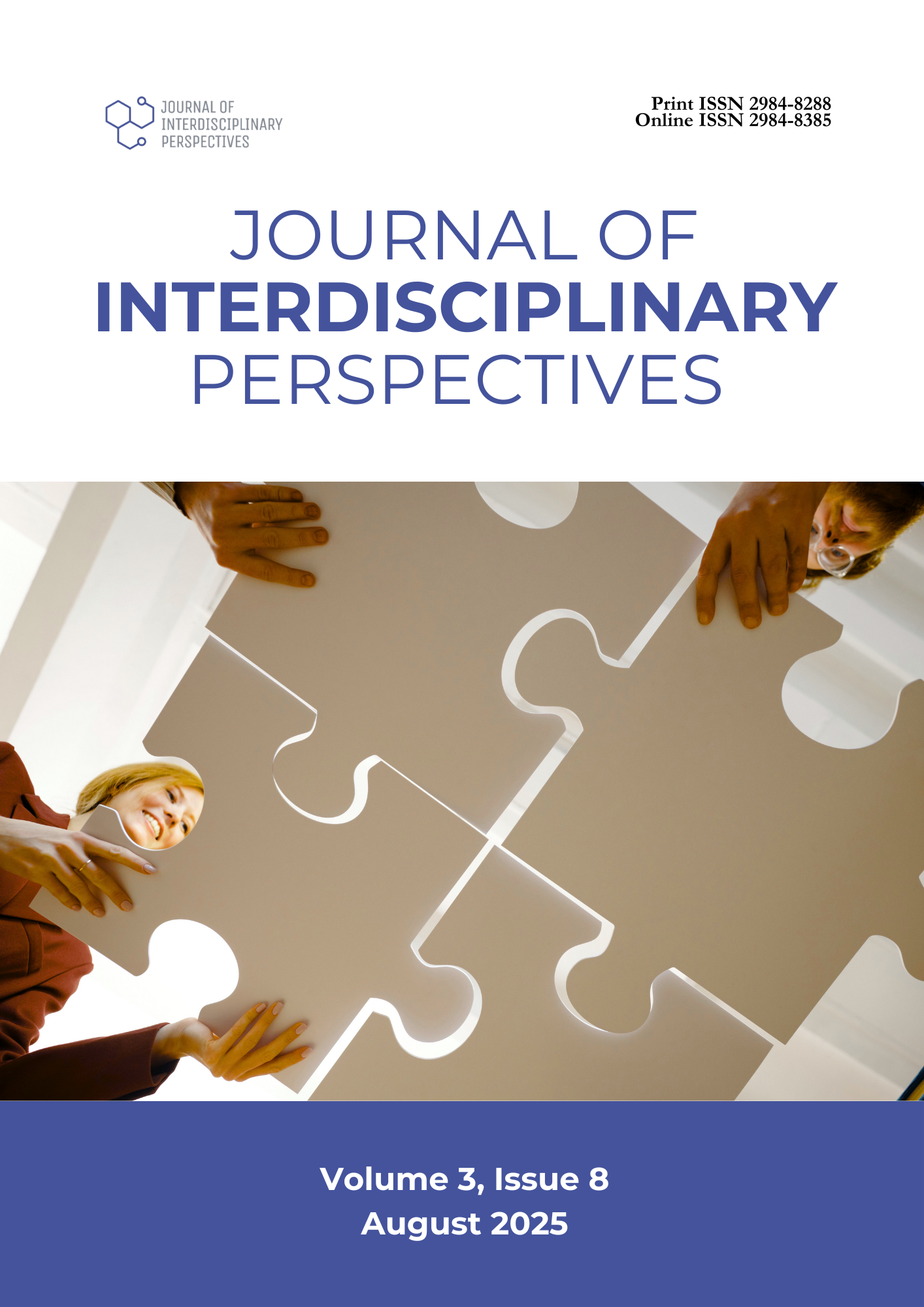Basic Interpersonal Communication Skills, Cognitive Academic Language Proficiency, and Language Proficiency of Grade 10 Students
DOI:
https://doi.org/10.69569/jip.2025.468Keywords:
Basic Interpersonal Communication Skills, Cognitive Academic Language Proficiency, Language acquisition, Language proficiency, Second language educationAbstract
This quantitative-correlational study aimed to determine the Basic Interpersonal Communication Skills (BICS), Cognitive Academic Language Proficiency (CALP), and Language Proficiency levels of Grade 10 students at a public high school in the Capiz Division for the 2024-2025 school year. It also examined the relationships among these variables to gain a better understanding of how social and academic language skills contribute to overall language ability. A sample of study participants was drawn from a total population of 145 Grade 10 students using a stratified random sampling technique. Specifically, 105 out of 145 were involved in this investigation during the aforementioned academic period. Researcher-made tests were used to assess BICS and CALP. At the same time, an adapted version of the International English Language Testing System (IELTS) from Cambridge Exams Publishing (n.d.) measured overall language proficiency. The statistical tools used in the data analyses were frequency, percentage, mean, and standard deviation for descriptive statistics, while Pearson’s r correlation was used for the inferential analysis. The inferential tests were set at an alpha level of 0.05. Analyzed data revealed that students have a “high” level of BICS, a “moderate” level of CALP, and a “moderate” level of overall language proficiency. Moreover, there is a moderately significant positive correlation between the students’ BICS and CALP. Similarly, there is a moderately significant positive correlation between their BICS and Language Proficiency. However, there is no significant relationship between their CALP and Language Proficiency.
Downloads
References
Asio, H. T., & Quijano, M. G. (2023). English proficiency and academic performance of college students. International Journal of Multidisciplinary Research and Analysis, 6(3), 1301–1317. https://doi.org/10.47191/ijmra/v6-i3-50
Bacus, R. & Alda, R. (2023). English language exposure and literacy rate toward language proficiency: A cross-country analysis. World Journal of English Language, 13(5), 213–224. https://doi.org/10.5430/wjel.v13n5p213
Baker, C. (2001). Foundations of bilingual education and bilingualism (3rd ed.). Clevedon, United Kingdom: Multilingual Matters.
Barkaoui, K. (2025). The relationship between English language proficiency test scores and academic achievement: A longitudinal study of two tests. Language Testing, 42(3), 253–282. https://doi.org/10.1177/02655322251319284
Budiman, B., Ishak, J. I. P., Rohani, R., Lalu, L. M. H., & Jaelani, S. R. J. (2023). Enhancing English language proficiency: Strategies for improving student skills. Journal of Scientific Research, Education, and Technology, 2(3), 1118–1123. https://doi.org/10.58526/jsret.v2i3.205
Cambridge Exams Publishing. (n.d.). IELTS Academic 16 with answers: Authentic practice tests [eBook edition]. Retrieved from https://tinyurl.com/IELTSAcademic16
Canale, M. (1983). From communicative competence to communicative language pedagogy. In J. C. Richards & R. W. Schmidt (Eds.), Language and communication (pp. 2–14). London, United Kingdom: Longman.
Cervantes, M. (2023). SWS: 47% of Filipinos are ‘competent’ with the English language. Philippine News Agency. Retrieved from https://tinyurl.com/Cervantes2023
Cloud, N., Genesee, F., & Hamayan, E. (2000). Dual language instruction: A handbook for enriched education. Boston, MA: Heinle & Heinle.
Creswell, J. W. (2012). Research design: Qualitative, quantitative, and mixed methods approaches (3rd ed.). SAGE Publications.
Creswell, J. W. & Creswell, J. D. (2023). Research design: Qualitative, quantitative, and mixed methods approaches (6th ed.). SAGE Publications.
Cummins, J. (1981). The role of primary language development in promoting educational success for language minority students. In California State Department of Education (Ed.), Schooling, and language minority students: A theoretical framework (pp. 3–49). California State Department of Education. https://doi.org/10.13140/2.1.1334.9449
Cummins, J. (1979). Cognitive/academic language proficiency, linguistic interdependence, the optimum age question, and some other matters. Working Papers on Bilingualism, No. 19. Ontario Institute for Studies in Education. https://tinyurl.com/y3kza4ss
Daller, M. H., & Phelan, D. (2013). Predicting international student study success. Applied Linguistics Review, 4(1), 173–193. https://doi.org/10.1515/applirev-2013-0008
Dwivedi, A. (2021). BICS/CALP. EBSCO Research Starters: Academic Overviews. https://tinyurl.com/574xp4z8
EF Education First. (2023). EF English Proficiency Index 2023. https://tinyurl.com/3vn82d6s
Genelza, G. (2022). English proficiency and academic achievement of junior high school students at University of Mindanao Tagum College. https://tinyurl.com/Genelza2022
Kamasak, R. & Sahan K. (2023). Academic success in English medium courses: Exploring student challenges, opinions, language proficiency, and L2 use. RELC Journal, 55(3), 705-720. https://doi.org/10.1177/00336882231167611
Muyalde, R. M. (2018). Preferred learning styles and language instructional techniques of Grade 11 students and their English language proficiency. Tin-aw, 2(1). https://ejournals.ph/article.php?id=13635
NSW Education. (2024). EAL/D learning progression. https://tinyurl.com/NSW2024EALD
Rose, H., Curle, S., Aizawa, I., & Thompson, G. (2020). What drives success in English-medium taught courses? The interplay between language proficiency, academic skills, and motivation. Studies in Higher Education, 45(11), 2149–2161. https://doi.org/10.1080/03075079.2019.1590690
Sebial, B., Reyes, J. M., San Juan, R. N. J., Jose, L. J. S., Palacio, J. J. P., Austria, K. S. R., Derpo, C. M. P., Oliveros, C. J. B., & Dela Cruz, V. (2024). Social interaction skills in English communication. Asian Journal of Education and Social Studies, 50(5), 365–380. https://doi.org/10.9734/ajess/2024/v50i51368
Schleppegrell, M. J. (2004). The language of schooling: A functional linguistics perspective. Mahwah, New Jersey, United States. Lawrence Erlbaum Associates. https://psycnet.apa.org/record/2004-13621-000
Shaleha, A. B. & Rahmawati, H. (2025). Senior High School Students' Challenges in Speaking English Across Proficiency Levels: A Narrative Inquiry. Journal of Research on English and Language Learning (J-REaLL), 6(1), 1–11. https://doi.org/10.33474/j-reall.v6i1.22605
Sioco, E., & De Vera, P. (2018). Grammatical competence of junior high school students. Asia Pacific Journal of Multidisciplinary Research, 6(1). https://tinyurl.com/SiocoDeVera2018
Vygotsky, L. S. (1978). Mind in society: The development of higher psychological processes (M. Cole, V. John-Steiner, S. Scribner, & E. Souberman, Eds. & Trans.). Harvard University Press.
Yu, Q., Brunsting, C., Smart, J., & Bingham, W. P. (2024). Language proficiency, second language educational experience, and psychological well-being among international students at U.S. Universities. Res High Educ 66, 3 (2025). https://doi.org/10.1007/s11162-024-09821-7
Yun, H. (2024). Assessing the correlation between English proficiency and engagement in school and community. Journal of Student Research, (13) 3. https://doi.org/10.47611/jsrhs.v13i3.7325
Downloads
Published
How to Cite
Issue
Section
License
Copyright (c) 2025 Journal of Interdisciplinary Perspectives

This work is licensed under a Creative Commons Attribution-NonCommercial 4.0 International License.








